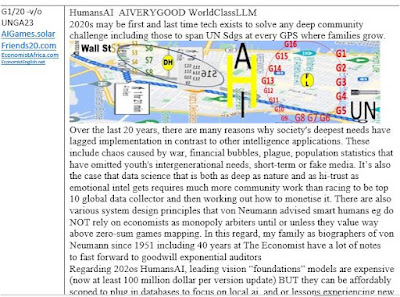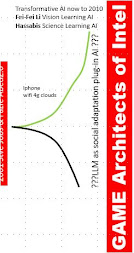Description Main applications of AI
Information and communication Includes the production and distribution of
information and cultural products, the provision of the means to transmit or distribute
these products, as well as data or communications, information technology
activities and the processing of data and other information service activities.
AI Applications
Advertising
Image or text processing
Personalised content generation
Augmented and virtual reality
Customer services
Network security
Network management, predictive maintenance
Software production
====================================
Professional, scientific and technical activities
Includes specialised activities that require a high degree of training and make specialised
knowledge and skills available to users including legal affairs, management,
consultancy, architecture, engineering, R&D, advertising and more.
AI APPLICATIONS
Legal and accounting AI applications
Marketing and advertising services (e.g. personalised advertising and
pricing, click prediction systems, recommendations based on social media
posts, emails, web navigation, psychometric assessment development,
etc.)
Scientific research and development
=============================
Financial and insurance activities
Includes financial service activities, insurance, reinsurance and pension funding and activities
to support financial services, funds and holdings.
AI APP
Credit scoring
Financial technology lending
Cost reduction in the front and middle office
Fraud detection and legal compliance
Insurance
Algorithmic trading
==============================
Administrative and support service activities (SectionN)
Includes a variety of activities that support core business functions and of which the
primary purpose is not the transfer of specialised knowledge. This includes security
services, renting and leasing, office administrative functions and reservation services.
AI APPS
Auditing expense reports
Hiring applications
Smart contracts
Customer relations
'''''''''''''''''''''''''''''''''''''''''''''''''''''''''''
Agriculture, forestry and fishing (SectionA)
Includes the exploitation of vegetal and animal natural resources such as growing of crops,
raising and breeding of animals, harvesting of timber and other plants, animals or animal
products from a farm or their natural habitats.
AI APPS
Agricultural robots and drones
Crop and soil monitoring
Predictive analytics
=============================
Manufacturing
(Section C)
Includes the physical or chemical
transformation of materials, substances or
components into new product. The materials
transformed are products of agriculture,
forestry, fishing, mining or quarrying as well as
products of other manufacturing activities.
Excludes waste.
Market and domain forecasting
Product assembly
Asset optimisation
Supply-chain management and planning
Anomaly detection
Public
administration and
defence;
compulsory social
security (Section O)
Includes activities of a governmental nature,
normally carried out by the public
administration such as public order and
safety, legislative activities, foreign affairs,
national defence and more.
Predictive algorithms in the legal system
Predictive policing
Use of AI by the judiciary
Use of AI in defence (e.g. drone footage for surveillance, cyberdefence,
command and control, autonomous vehicles)
OECD FRAMEWORK FOR THE CLASSIFICATION OF AI SYSTEMS 69
© OECD 2022
Wholesale and
retail trade (Section
G)
Includes wholesale and retail sale (i.e. sale
without transformation) of any type of goods
and the rendering of services incidental to the
sale of these goods. Wholesaling and retailing
are the final steps in the distribution of goods.
Goods bought and sold are also referred to as
merchandise.
Customer management (e.g. prediction of customer needs, identification
of upsell and cross-sell opportunities, agile response mechanism)
Operational efficiency (e.g. just-in-time production/delivery, product
categorisation/placement, demand forecasting, check-out free store)
Legal efficacy (e.g. compliance systems to predict violations in the supply
chain; legal contract translation, cataloguing and implementation - “smart
contracts”)
Customer acquisition (e.g. matching buyers and sellers, personalised
ads/referrals – see “Marketing and advertising services”)
Customer retention (e.g. learning and predicting customers’ preferences
and needs, tailored offers, dynamic pricing)
Customer service (e.g. conversational interfaces, voice and video search,
chatbots, mood tracking)
Education (Section
P)
Includes private and public education, all
levels from pre-school to higher education,
adult education, sport education, literacy
programmes and more.
Personalising learning with AI (e.g. adaptive tests and learning systems)26
Supporting students with special needs with AI (e.g. wearables using AI)
Reducing dropout rates (e.g. predictive and diagnosis models)
Construction of scoring of tests or exams
Fraud detection during exams
Chatbots
Human health and
social work
activities (Section
Q)
Includes the provision of health and social
work activities. Activities include a wide range
of activities, starting from health care provided
by trained medical professionals in hospitals
and other facilities, to residential care
activities that still involve a degree of health
care activities to social work activities without
any involvement of health care professionals.
Detection (e.g. outbreak alerts)
Precision medicine (e.g. treatments)
Optimise health systems (e.g. resource allocation, workflow management)
Facilitating health research (e.g. drug discovery, vaccine development)
Preventative / personalised healthcare (e.g. self-monitoring tools,
applications and trackers)
Nursing and elderly care
Diagnosis (e.g. radiology)
Transportation and
storage (Section H)
Includes the provision of passenger freight
transport, whether scheduled or not, by rail,
pipeline, road, water or air. Also includes
associated activities such as terminal and
parking, cargo handling, storage. Includes
rental and postal activities.
Warehouse and supply-chain management
Shipping and itinerary route optimisation, including based on traffic data
Autonomous driving systems
Computer vision technologies that track driver’s eyes / focus to assess
distraction
Accommodation
and food service
activities (Section I)
Includes the provision of short-term stay
accommodation for visitors, of complete meals
and drinks for immediate consumption. The
type of supplementary services provided
within this section can vary widely. Excludes
long-term stay and primary residence.
AI-powered chatbots (e.g. booking, ordering)
Face recognition (check-in)
Analysis of customer, occupancy and guest feedback data
Construction
(section F)
Includes general and specialised construction
activities for buildings and dwellings, civil
engineering works, new work, additions,
repairs and alterations.
3D Building Information Modelling (BIM)
Buildings simulators
Drones and sensors on construction sites
Data analytics based on the real-time data collected on-site






No comments:
Post a Comment